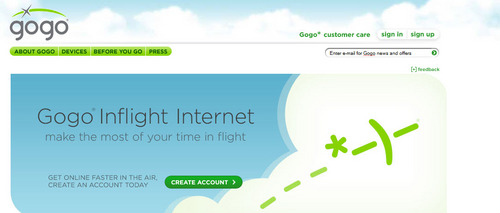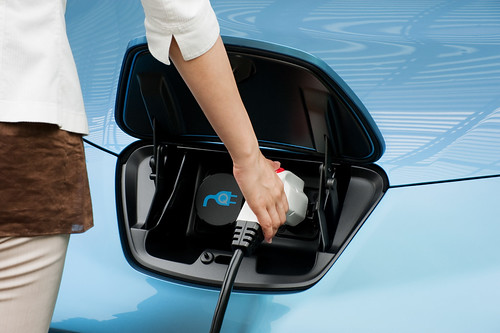Foreword: TransportGooru is thankful to Mr. Glenn Havinoviski, a great supporter and an occasional editorial contributor (See Glenn’s Career profile below) for this review. Recently, Glenn traveled from Washington, DC to San Antonio for a business event. Enroute , he was updating his LinkedIn.com status message which read “Glenn is attending the ITE meeting in San Antonio this week! And typing this while enjoying inflight wi-fi (free for now)…..” In a few minutes of this update, I wrote to him asking if he would like to write a review of this in-flight service and he gladly agreed and offered to send his review upon return. As promised, Glenn promptly sent his input and TransprtGooru is glad to share that with all of you. Upon reading, please register your comments so that Glenn will get to know what you all thought of his review.
Review by: Glenn Havinoviski
Delta has been redeeming themselves lately with their competitive fares (compared to United) out of Washington Dulles Airport, an advantage slightly tarnished by the chronic delays and crowding at their hub in Atlanta. They are now entering the 21st Century thanks to their embracing of Internet access.

THE HISTORY
Wi-fi in the sky is not new. About 5 years ago, Lufthansa tried mid-air Internet access with the Connexion service by Boeing on 66 of its 80 long-range jets, on occasion even handing out one-hour-free cards at the gate in Frankfurt or on the plane. Of course, on an 8-hour flight, that only gets you so far. I recall it was about $18 per flight if you wanted it the whole time. The service, which worked well the times I used it, died about 3 years after it started, given Boeing could not make it profitable thanks to the cost of maintaining their magic satellites as well as the half-ton of equipment on each plane with the service. (It didn’t help that the US airlines were not in the wi-fi game at that point to help amortize those satellite costs.) Connexion was pretty fast for downloads (3 MBps) but uploads (at 128 kbps) were somewhat slow. Not having in-seat power on Lufty was a minus as well.
THE AIRLINES MOVE FORWARD
Fast forward to 2009. Airlines have discovered the concept of supply and demand (at the expense of the casual flyer), and now suddenly have resources even in today’s sickly economy.
Aircell offers the GoGo wireless service on American, Delta, Airtran and Virgin America using a network of ground stations instead of satellites (meaning other services are needed for overseas flights), and 1 TB servers on each plane with relatively low cost wiring and antennas throughout the craft. Gogo is a much more compact solution than Connexion. Aircell claims they can equip a plane overnight with all the GoGo equipment.
Airtran and Virgin America have it on all their planes, American is ramping up to include the service on most planes and Delta promises to put it on 300 domestic aircraft by the end of the year. Stingy United will offer GoGo only on its premium JFK-LAX and JFK-SFO services.
As for other services, Southwest, Alaska and JetBlue are trying out free wi-fi on a handful of planes. US Airways is a no-show in the Wi-Fi derby. In the meantime, Lufthansa is firing up its old Connexion infrastructure (including the satellites) with the help of T-Mobile.
MY EXPERIENCE
Delta’s service is $9.95 (flights < 3 hours) and $12.95 (flights > 3 hrs), but if you happen to be transferring in Atlanta, perky college-age guys and gals clad in black with GoGo Wireless duffel bags will hand you one or two cards inviting you to try it out for free for a day of travel (they expire 9/30). Three of the four Delta flights I was on had the wi-fi. All of those planes were MD-88’s. The one plane that didn’t was a 757 (which inexplicably had a video on board explaining how to use the non-existent wi-fi service on that plane).
On my trip to San Antonio, I changed in Atlanta and promptly received my freebie card from the perky co-ed. I used the service on the ATL-SAT leg and will report on it below. On the way back, they had the service but I didn’t have the freebie card and didn’t feel like paying $12.95, considering I had finished with the ITE meeting and pretty much took care of my emails with my iPhone while on the ground. At Atlanta a pair of freshly scrubbed college kids in Gogo black gave me two cards, which I’ve saved for future use (between now and 9/30 when they expire), given the lack of Wi-fi on the 757 which served the last leg of the trip, from ATL to IAD.
THE REVIEW
GOOD: I didn’t have to upload anything, so I couldn’t tell how slow that might be (as before, uploads are much slower than downloads). But I was able to handle emails, grab stuff off the web, and do a few electronic payments. Really just like my home network. Of course having it for free was whipped cream on my strawberry cheesecake.
BAD: MD-88’s do not carry power connections. As my battery on my Dell lasts for 5 hours, not a biggie. Unfortunately, as with every service you start from scratch with, you launch Internet Explorer and get taken to a welcome screen to GoGo, which in turn makes you go-go through 2-3 pages of info you have to fill out (name, email, the usual assorted data as well as credit card if you are paying to use the service, discount code if you have a card, and of course the disclaimer at the end you have to acknowledge). Also bad is that it’s not on every plane yet.
I did not tsubscribe to the wifi on my iPhone though, although it was a strong, accessible signal – it would have been another sign-up.
Overall though – kudos to the airlines for utilizing services which have lightened up on the on-board infrastructure for domestic travel. As long as they keep Skype and voice-based cellular service off planes, I’ll be a happy camper. Technology is good.
——————————————————————————————————————————————
About Glenn Havinoviski: Glenn is an Associate VP
, Transportation Systems at Iteris in Sterling, VA and is a registered PE. Until recently, he was an Associate Vice President and ITS Group Director for HNTB Corporation in the Arlington, Virginia office. His 27 years of experience (25 in consulting, 2 in the public sector) include serving as both a practice builder and a practice leader, providing project management and technical leadership for ITS and traffic management projects in the US and abroad.Glenn N. Havinoviski, PE joined Iteris in Sterling, VA on July 6 as Associate VP, Transportation Systems, after serving as Associate Vice President and ITS Group Director for HNTB Corporation in the Arlington, Virginia office. His 27 years of experience (25 in consulting, 2 in the public sector) include serving as both a practice builder and a practice leader, providing project management and technical leadership for ITS and traffic management projects in the US and abroad.















